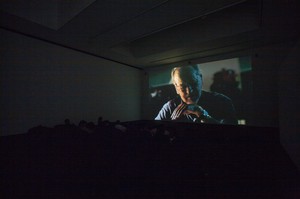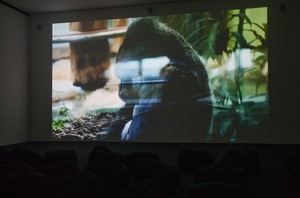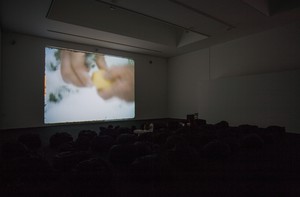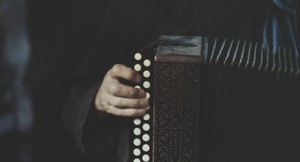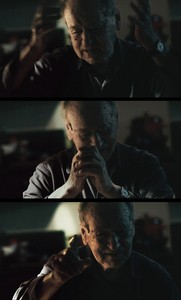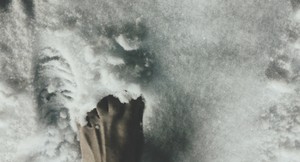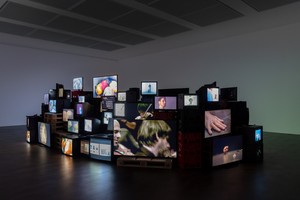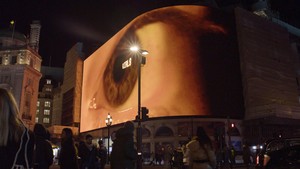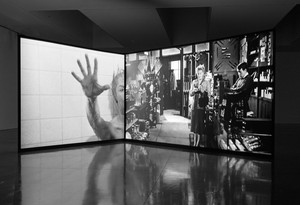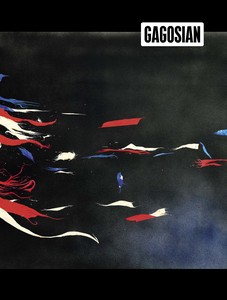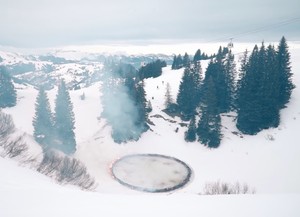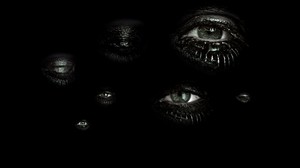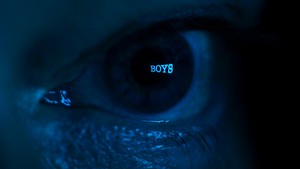I met Jonas when he was still a young man. I think he was 75 years old. . . . I was intrigued with Jonas from the first moment I met him, maybe from the first thirtieth of a second or the first twenty-fourth of a second that I met him. That’s where my intrigue comes from.
—Douglas Gordon
Long before I met Douglas I met his films and they were exciting. I like them because they are so different from what I or anyone else is doing. His films open a totally new invisible window full of visual excitement. And I like Douglas himself, because he’s always 200 percent himself, and is always unpredictable, like his films.
—Jonas Mekas
During Frieze London, from October 3 through 7, Gagosian Britannia Street will screen Douglas Gordon’s 2016 film I had nowhere to go: Portrait of a displaced person. The film is a portrait of Jonas Mekas, the legendary artist, filmmaker, poet, curator, and godfather of American avant-garde cinema. At ninety-five years old, Mekas is among the few remaining survivors of Nazi persecution.
Recently shown at documenta 14 in Athens and Kassel, as well as at numerous film festivals, I had nowhere to go has been celebrated for its poignant materiality and its reflection on the narrative of history. Gordon’s film work has redefined expectations of the relationship between sound, text, time, and the moving image—as in his 1993 film 24 Hour Psycho, which stretched the duration of Hitchcock’s Psycho (1960) from the traditional feature film length of 109 minutes to twenty-four hours.
By contrast, I had nowhere to go proceeds with one minute of real time per year of Mekas’s momentous life, from fleeing his native Lithuania, to his time in forced labor camps and a displaced persons center during the Second World War, to his eventual arrival in New York, and beyond. The viewer is plunged into collective and individual spaces of memory via long, imageless stretches over which Mekas narrates excerpts from his memoir (from which the film takes its title). With its immersive sound environment and intermittent, fleeting images that are evocatively juxtaposed with Mekas’s anecdotes, Gordon’s film reveals in its subject a puckish humor that outweighs despair, and a redemptive curiosity for life in the face of adversity.
